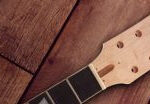For DIY guitar effects enthusiasts, finding reliable schematics and PCB layouts is crucial. While there isn’t one single perfect repository, the online community offers a wealth of resources for those looking to build their own stompboxes. This guide aggregates some of the best online destinations for discovering Guitar Effects Pcb schematics and layouts, catering to builders of all skill levels. Whether you’re breadboarding a classic fuzz or designing a custom overdrive, these resources will provide the blueprints you need to bring your sonic visions to life.
Free Stompboxes Forum
Tracing pedals since 2007, Free Stompboxes (FSB) is a cornerstone of the DIY guitar effects community. This forum is a treasure trove of information, with members diligently tracing and sharing schematics for countless pedals. While not solely focused on PCBs, the discussions and shared knowledge are invaluable for anyone interested in understanding and building guitar effects circuits. You’ll find a deep history of pedal modifications, comparisons of different circuit versions, and insights into the nuances of classic and boutique designs.
Within the FSB forum, searching for specific pedal names or circuit types will often lead you to threads containing schematics, PCB layouts (sometimes contributed by members), and build reports. For those diving deep into circuit design, understanding schematics is paramount, and FSB is an excellent place to learn from experienced builders and contribute to the collective knowledge.
Experimentalists Anonymous DIY Archives
The Experimentalists Anonymous DIY Archives offer a collection of schematics, categorized for easy browsing. While the site’s design is simple, the content is rich with circuit diagrams for various audio effects, including a section dedicated to schematics. This resource is particularly useful for those who prefer a straightforward, no-frills approach to finding circuit diagrams.
Navigating the archive directories, you can explore a range of effect types and circuit designs. For builders focused on PCB projects, these schematics are the essential first step in designing or sourcing a compatible PCB layout. Understanding the schematic allows you to adapt existing PCB designs or create your own custom PCBs for unique guitar effects.
Parasit Studio
Parasit Studio is a multifaceted resource for DIY stompbox enthusiasts. Beyond being a recording studio, it offers a valuable collection of vero board layouts and original pedal designs. While primarily known for vero layouts, Parasit Studio also hosts schematics, making it a useful stop for builders seeking circuit diagrams alongside stripboard layouts.
Tagboard Effects is another essential forum, specializing in vero (stripboard) and tagboard layouts for a vast library of guitar effects. With over a thousand verified designs, this forum is a go-to for builders who prefer stripboard construction. While the primary focus is not PCBs, the forum often includes links to schematics, typically directing back to Free Stompboxes or other schematic resources.
For those interested in eventually transferring a stripboard design to a PCB, Tagboard Effects provides a practical starting point. By studying the vero layouts and accompanying schematics (where available), builders can gain a deeper understanding of the circuit and prepare for PCB design or adaptation.
Perf and PCB Effects Layouts
Effectslayouts.blogspot.com is a dedicated library of perfboard and single-sided PCB layouts specifically for guitar and bass effects. This blog is a fantastic resource for pedal building enthusiasts looking for ready-to-use layouts. By clicking on the “Pedals” section, you can browse a wide selection of effects with provided layouts.
While schematics are not always directly provided on Effects Layouts, it serves as an excellent source for PCB and perfboard layouts. Often, builders will use layouts from sites like this in conjunction with schematics found on forums or other archives to fully understand and modify circuits for PCB construction.
ElectroSmash
ElectroSmash stands out by offering in-depth electronics analysis for audio circuits. This website delves into guitar pedal circuits, amplifier analysis, chip internal schematics, modifications, and even provides PCBs for some projects. ElectroSmash is a more academic resource, focusing on the technical aspects of effects circuits, frequency response analysis, and stompbox design.
For those seeking a deeper understanding of the electronics behind guitar effects, ElectroSmash is invaluable. While it may not be solely a schematic repository, the detailed circuit analysis and occasional PCB offerings make it a highly relevant resource for builders aiming to design or modify guitar effects PCBs with a strong theoretical foundation.
General Guitar Gadgets (GGG)
General Guitar Gadgets (GGG) is a long-standing resource in the DIY guitar community. Their schematics section offers a collection of circuit diagrams, often accompanied by build instructions and project guidance. GGG is known for its clear and well-documented projects, making it suitable for builders of varying experience levels.
GGG’s schematics are particularly helpful for those who appreciate detailed build documentation. While they also offer PCBs for sale on their main site, the schematics section is a freely available resource for understanding circuits and designing your own PCBs based on their projects.
Beyond the Main Repositories
In addition to these major resources, numerous individual blogs and websites contribute to the wealth of online guitar effects schematics. Websites like muzique.com (Jack Orman’s blog), GEO’s Effects Schematics (RG Keen’s site), Revolution Deux, BEAVIS Audio, MOOSAPOTAMUS, Viva Analog, and Aron Nelson’s Gallery offer schematics, project ideas, and unique perspectives on guitar effects circuitry.
Exploring these diverse resources is key to finding the perfect guitar effects PCB schematics and layouts for your projects. By combining schematics from forums and archives with layouts from dedicated blogs and communities, DIY builders can access a vast library of knowledge and inspiration to create their own custom guitar effects pedals. Remember to always verify schematics and layouts and engage with the DIY community for support and guidance as you embark on your pedal building journey.

